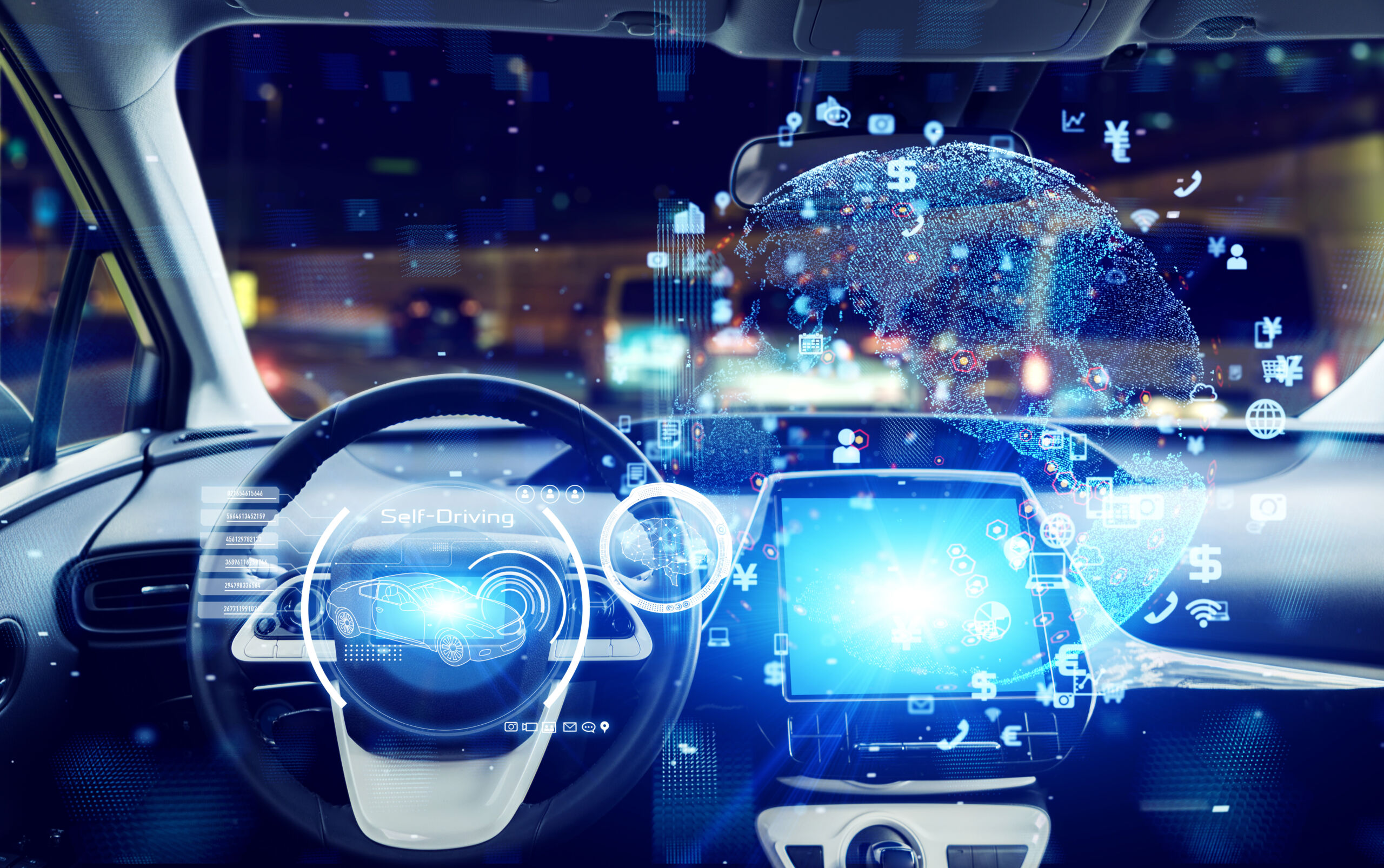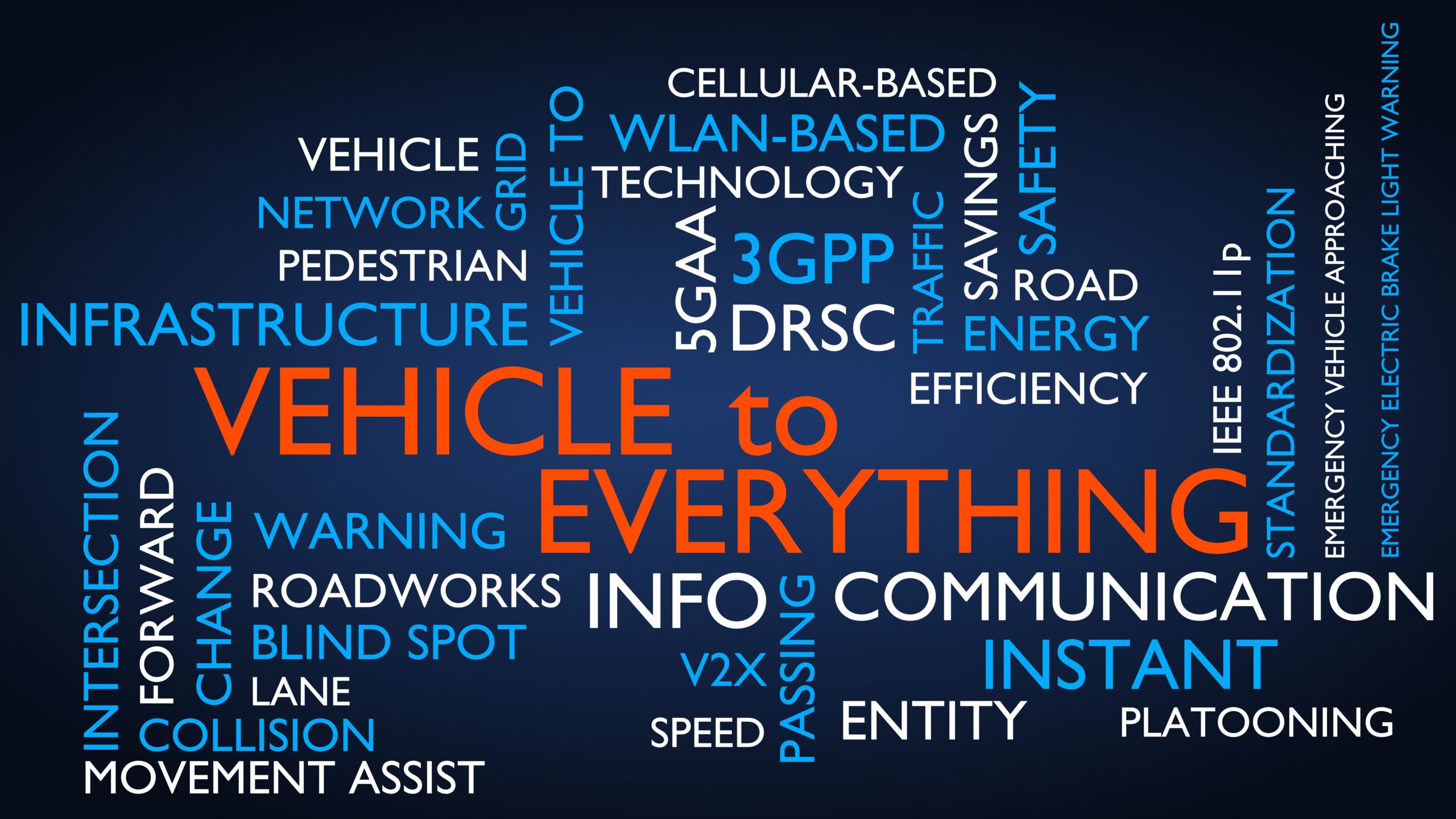C-V2X for 5G Network Infrastructure Provider
Realtime Simulation of Car to Anything Communications
Not only for manufacturers of highly automated vehicles or vehicles with advanced driver assistance systems (ADAS), but also for 5G Network Infrastructure Providers, our simulation service holds great potential. By leveraging our advanced technology, you can enhance the effectiveness and efficiency of your network infrastructure.
As a 5G Network Infrastructure Provider, you understand the crucial role of reliable and seamless communication in enabling connected vehicles and smart transportation systems. Our C-V2X simulation service allows you to accurately simulate and evaluate the performance of 5G networks in supporting C-V2X communication.
Whether you’re looking to optimize network coverage, assess the impact of various network configurations, or ensure the smooth integration of C-V2X capabilities, our simulation service offers a comprehensive solution tailored to your needs.
Our team is ready to provide you with the support and guidance you require to make the most out of our service. Feel free to reach out to us with any questions or for assistance in optimizing your specific network infrastructure requirements.
Discover the endless possibilities our C-V2X simulation service brings to 5G Network Infrastructure Providers. Explore our website to learn more about our service and unlock the true potential of your network infrastructure. Together, let’s shape the future of connected transportation.
C-V2X Use Cases
HV receives information from a backend/cloud
Automated vehicles can receive important information from a backend or cloud system to help them navigate the road ahead. This is especially important for real-time high definition (HD) map updates, which can provide the vehicle with up-to-date information about the road and any potential obstacles or hazards.
By receiving this information, the vehicle can make adjustments to its route and driving behavior, improving safety and efficiency. This information may also be used in conjunction with traffic management systems to further optimize the vehicle’s route and ensure a smooth driving experience.
Data Distribution about Objects on the Road in Form of Object Lists or Occupancy Grids
Automated vehicles rely on information from sensors installed on the road to detect objects and make driving decisions. When an automated vehicle enters an area covered by these sensors, it can subscribe to an infrastructure service that provides information about the environment. This includes updates about the location, speed, direction, and size of objects on the road such as other vehicles, pedestrians, and obstacles. This information is transmitted frequently and contains rolling IDs for each vehicle to quickly identify them on the map.
By using this data, an automated vehicle can improve its own sensors‘ accuracy and extend its viewing range. This means that the car can better understand the road ahead and make more informed driving decisions. Overall, this helps to create a smoother and safer driving experience.
In-Vehicle Entertainment (IVE) – High-Definition (HD) Content Delivery
Passengers in both automated and non-automated vehicles can enjoy entertainment content such as videos, games, virtual reality, office work, and online education while on the move. With the availability of high-definition (HD) content delivery, passengers can enjoy high-quality viewing experiences while traveling. This service is especially relevant for long journeys where passengers may want to pass the time and stay entertained.
Bus Passenger Service – Low-End Service for Cars
In addition to IVE, this service is specifically designed for buses and other public transportation vehicles. It allows passengers to access low-end entertainment content such as news, games, music, and videos while commuting. This service can enhance the passenger experience and make the journey more enjoyable. It is important to note that this service is not available for drivers in non-automated vehicles, as their attention should be fully focused on driving safely.
Passengers in cars can now enjoy a high-end entertainment experience with the availability of high-definition (HD) content delivery, online gaming, and virtual reality (VR) services. With this service, passengers can access high-quality entertainment content while on the move, making long journeys more enjoyable.
HD content delivery allows passengers to enjoy high-quality viewing experiences with crisp and clear images, while online gaming brings a new level of interactivity and competition to the in-car entertainment experience. Virtual reality (VR) takes things even further, allowing passengers to fully immerse themselves in a virtual world and experience entertainment in a completely new way.
This service is especially relevant for high-end cars where passengers expect a premium entertainment experience. It can also be a selling point for car manufacturers looking to differentiate themselves from competitors.
During patient transport, paramedics, doctors, and trauma centers use patient monitoring equipment to collect vital information about the patient’s health. This information includes data such as heart rate, blood pressure, and oxygen levels, as well as images, voice recordings, and videos of the patient.
All of this information is shared between the medical professionals involved in the patient’s care to ensure that everyone has access to the most up-to-date information. This helps medical teams to make informed decisions and provide the best possible care for the patient.
Patient transport monitoring is essential for ensuring that patients receive the appropriate care during transport, whether that be in an ambulance or in a helicopter. It also allows for seamless transitions between medical facilities, ensuring that patients are monitored and cared for every step of the way.
Infrastructure-Based Tele-Operated Driving
Automated vehicles can experience failures in their computing or sensor components that compromise their ability to drive safely. Tele-operated driving allows for remote guidance of the vehicle to a safer location. The tele-operator uses infrastructure sensors to assess the situation and provide appropriate guidance to the vehicle, such as trajectory and maneuver instructions, to move to the nearest safe location. This can be extended to include traffic infrastructure elements, such as traffic lights and speed limit signs, to further support safe driving.
Tele-Operated Driving
Sometimes, a driver may not be able to drive safely due to a temporary health issue, such as an illness or headache. In such cases, the driver can request a remote driver to take control of the vehicle and drive it to the destination safely and efficiently. The remote driver provides instructions to the vehicle based on the surroundings and environment to navigate it safely.
Automated Parking with Tele-Operated Driving (Remote Driving Paths)
When a vehicle reaches its parking destination, the driver can leave the vehicle and a remote driver can park it from a tele-operation center.
Tele-Operated Driving Support (Remote Steering)
Autonomous vehicles may encounter complex situations where they cannot make a safe decision. In such cases, they can request remote driving support to help them navigate through the situation. The autonomous vehicle shares its video and sensor data with the remote driver, who then provides the appropriate trajectory and maneuver instructions to help the vehicle navigate the complex environment safely. Once the situation is resolved, the vehicle can switch back to autonomous driving mode without remote support.
When an autonomous vehicle’s virtual driver system disengages, it submits a report that includes a recording of vehicle system data, sensory information, and environmental conditions to OEM and government data centers. This information helps improve the vehicle’s autonomous driving capabilities in the future.
In a scenario where an autonomous vehicle encounters unexpected roadwork blocking a lane ahead, the vehicle may require human driver assistance to navigate around the obstacle and continue safely on its route. This assistance can be requested by the vehicle’s occupants or initiated automatically by the vehicle itself.
Vehicle Collects Hazard and Road Event for AV
Collecting information on road hazards and events is an important part of ensuring the safety of autonomous vehicles and other advanced driving applications. Vehicles equipped with sensors collect data on hazards and events, such as accidents or road construction, and share this information with other vehicles and servers for processing and analysis.
Automated Driving (Data sharing of dynamic objects)
In addition, vehicles collect data on dynamic objects, such as other vehicles and pedestrians, and share this information with other vehicles and servers as well. This data is processed and analyzed to provide a better understanding of the environment and potential hazards.
Automated Driving (Non-analyzed Sensor Signal Sharing)
Sometimes, vehicles may encounter obstructed views or other situations where additional sensor data is needed. In these cases, the vehicle can request non-analyzed sensor data from other vehicles or infrastructure. This data is analyzed and used to enhance the vehicle’s perception of the road and potential hazards.
By collecting and sharing this information, vehicles can work together to create a safer and more efficient driving experience for everyone.
C-V2X Application Areas
About us
The C-V2X simulation is a development of the Fraunhofer IIS (Institute for Integrated Circuits). Through a cooperation partnership with LZE GmbH, it can be made available to interested customers via a licensing model by LZE GmbH.
LZE GmbH is the interface that turns inventions into innovations. We offer companies access to new developments and products as well as all services along the market launch. At the same time, we commercialise leading edge technologies from the Fraunhofer Institutes IIS and IISB and the Friedrich-Alexander University.
You would like to talk to us?
Contact us – we look forward to your enquiry!







